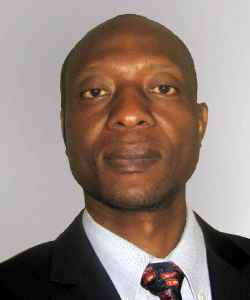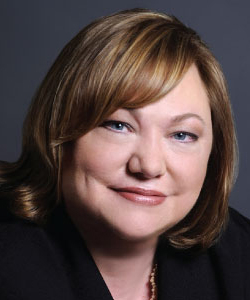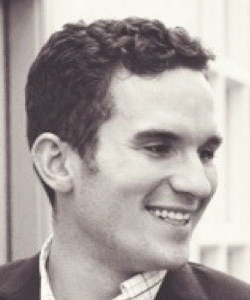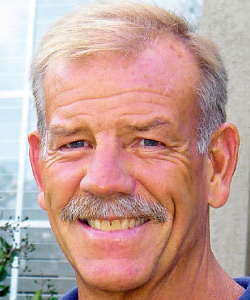
Our members are integral to the fight against financial crime, whether detecting a suspicious transaction, uncovering something unusual in your customer’s behavior or making a breakthrough in an investigation, you are a major player in the fight against financial crime and we salute you.
ACAMS moneylaundering.com International AML & Financial Crime Conference is celebrating its 20th anniversary in the business. Financial crime prevention professionals were asked to help ACAMS commemorate 20 years of AML by sharing inspiring and empowering success stories from their careers.
ACAMS received numerous success stories and we chose to highlight five of them in this superb article. We hope you will learn, become inspired and perhaps have an ‘aha’ moment while reading the five success stories from your peers.
Our first story is from Solomon Calleb Ngoma, CAMS, money laundering reporting officer for Barclays Bank Zambia PLC.

My journey in anti-money laundering (AML) started in 2002. After I completed my studies at the University of Zambia, my contract, while on unpaid leave with Zambia Revenue, was not renewed. I visited a colleague at one of the law enforcement agencies and informed him that I was looking for employment. He informed me that the Drug Enforcement Commission was establishing a new unit: the Anti-Money Laundering Investigations Unit (AMLIU). He further said that with my experience in banking and taxation, the Commission would greatly benefit if I joined. I said that I would be interested in becoming part of the new team. I submitted my application, curriculum vitae and copies of my certificates to the Commission. Thereafter I was called together with others for interviews. I was offered the job of chief investigations officer in March 2003.
Soon after, the work began. As an experienced banker and trained tax man, I was in charge of financial investigations. Most of the team members were young and had to be trained. The training was a combination of specialized and on-the-job training.
Not long after, we received a report of fraud and money laundering by a travel agency. We were required to quickly establish the predicate offense and prosecute for money laundering. I was the lead investigator. We strategized, moved with speed, ensured secrecy, conducted a search at the premises of the company and gathered the computers and documents for scrutiny to follow the money. The evidence was collected.
The principal suspects were the directors of the company. They were also the sole signatories to the bank accounts. We called the suspects for interviews, interrogation and recording of statements. Their lawyer insisted that they would speak under a caution statement and that they would exercise their right to remain silent. When we began, they responded with silence. We continued showing them the documents and asking them questions. They remained silent. We kept two documents until the end and asked them to comment. They asked to meet with their lawyer privately. When we returned, they opted to plead guilty and wanted to settle out of court. The case resulted in forfeiture of property to the state amounting to K3.2 billion; at that time this was equivalent to about $1 million. Under my leadership, the team prevented the government from losing billions of Kwacha to fake suppliers and much more.
I left AMLIU in 2007. The AMLIU officers matured in their work and I am proud to state that one of the officers I coached holds a senior position at the Financial Intelligence Center.
I was the first Zambian ACAMS member and I introduced ACAMS in Zambia. Zambia now has more than 20 Certified Anti-Money Laundering Specialists.
Our second story was shared by Debbie Hitzeroth, CAMS, BSA/OFAC compliance officer for United States Postal Service.

A normal day for a BSA/AML compliance officer is filled with reviewing transactions, clearing alerts, and keeping up-to-date on the latest sanctions, advisories and money laundering trends. I know the job we do is important and helps law enforcement do theirs. When I read newspaper articles about a court case that resulted, in part, from my team’s work it is always rewarding. But when my family and friends want “juicy details” on how I help fight financial crimes, I have little to say. My stories, at least those that I can tell, are never as exciting as those that my law enforcement friends tell of their undercover work and how they take down the “bad guys.”
I thought it would be easy to write about one of my successes. Before entering the AML world, I was a reporter for a daily newspaper and made my living writing. But I soon comprehended that not only was it not easy, it was impossible. When thinking of times that I or a colleague played a key role in fighting financial crime, I realized that as a BSA compliance officer, I had few interesting tales I could share. There are probably many compliance officers who are in my shoes. Every day our program and compliance teams detect potential financial crimes and we do our job. We investigate as much as possible, determine if a financial activity is suspicious and if so report it on a SAR. As we can’t discuss the filing of SARs, our lips are sealed. No story to tell.
We have identified potential fraud via BSA due diligence, dealt with potential elder abuse and have grappled with potential criminal activity in HIFCAs and HIDTAs around the country. It’s exciting, it’s rewarding, and the stories of what we did and how we did it would make great tales. The problem is that I’m not at liberty to discuss any of these interesting stories. Why? Because I am a compliance officer.
It dawned on me that perhaps I could tell the story of the many BSA compliance officers out there whose work is primarily seen as keeping our respective organizations out of regulatory trouble. But that is hardly exciting—as far as public disclosure goes. Any time we refine our red flags to catch sophisticated or new money laundering schemes we are playing a key role in fighting financial crime. Any time we train our analysts and front-line personnel to focus in on new red flags or refine the way we write our SARs, we are in the fight. Any time we pick up the phone to talk to a law enforcement officer, we’ve played our part.
Playing key roles often lies within the daily work of a compliance effort. It’s not high-profile or glamorous, yet, it is necessary and mandatory. It is the “key” to success. So when was the last time I played a key role in fighting financial crime? Today. I came to work.
Our third story is told by Dwayne King, detective constable, Financial Crimes—Asset Forfeiture Unit for the Toronto Police Service.

My story is not one of a direct success; instead it is a story of networking and the importance of team work. It is a story about breaking down silos, sharing information and it is a story about understanding that the fight against money laundering is never going to be successful without teamwork in the true sense of the word.
I joined the Toronto Police Service Asset Forfeiture Section in January 2008. At the time, I had limited knowledge of anti-money laundering (AML) investigations. The letters STR, KYC and PEP meant nothing to me. I am proud to say that my knowledge in the AML field has grown by leaps and bounds in the last six years. I have obtained my CAMS certification from ACAMS and I have conducted multijurisdictional AML investigations. As an AML investigator I deal with my counterparts at various financial institutions on almost a daily basis. I quickly realized that investigators have a “go-to person” in each institution. I also noticed how difficult it could be to deal with a financial institution without a “go-to person.”
My story could not have been possible without the help of several dedicated individuals in the AML field. Individuals such as Peter Warrack, from a major Canadian bank, who taught me the importance of networking; and Garry Clement, from Clement Advisory Group, who trusted in me enough to give me my first lecturing opportunity at an ACAMS’ Canadian Chapter one-day training event.
It was at that event that I met Warrack and it is through my interactions with him that I began to understand the importance of breaking down the silos that currently exist in the world of AML investigations. Shortly after our meeting at the ACAMS event, Warrack invited me to speak to his AML team. He asked me to present the law enforcement side of AML investigations. I called my presentation “The Flip Side,” and during that two-hour presentation, I demonstrated how and when information provided by financial institutions played a significant role in AML/proceeds of crime investigations. I also pointed out areas where both law enforcement and the financial institution had made mistakes, not as criticisms but as talking points for a positive change.
The response I received taught me that AML investigators were lacking feedback on the excellent work they do. In addition, I learned that AML investigators are also looking for a “go-to person” within law enforcement. I quickly realized that destroying “silos” and building networks is one of the keys to successful investigations.
With these two goals in mind, I approached the unit commander of the Toronto Police College and asked for permission to have three AML investigators from a major Canadian bank attend the asset forfeiture course and upon completion, receive a certification.
I can now proudly say that I had over 15 AML investigators from various financial institutions attend and successfully complete the Toronto Police Service Asset Forfeiture course alongside police officers within the Toronto Police Service. I look forward to seeing that number continue to grow in 2015.
Our fourth story comes from Conor Marrinan, former tier II SAR writer/investigator for TCF Bank.

I began working in anti-money laundering (AML) at a national bank in Minnesota when I was 22 years old and to be honest, most of my colleagues initially viewed me as incompetent. Having no previous AML experience before joining the bank, I had to prove to them that I could be a valuable asset to the bank. I had the pleasure of working as a team with those colleagues in order to maintain a sound AML department. My AML success story is not only mine, but it is my team’s success story.
In early 2013, our AML manager and a quality control specialist came to my desk asking if I could work with them on a time-sensitive case involving a real-time investigation. The quality control specialist noticed questionable debit card charges on an account holder’s demand deposit account (DDA) that would not normally be considered an AML threat. However, the charges appeared unusual. I wanted to make sure that this case was done right and that we worked as a team—so I accepted the task.
Over the next two to three months, I worked closely with management and quality control on this investigation. The end result of the investigation involved roughly $50,000 in weaponry (which is illegal for a civilian to possess), mandatory reporting to the proper authorities and the account holder’s accounts being closed. However, that was not the end of it.
As time went on, I learned that the FBI took significant interest in the nature of the investigation and how our team discovered this account’s suspicious activity. They viewed this investigation not only as a positive step in the fight against financial crime, but also a positive example of how AML can grow. Toward the end of my tenure at this bank, I received an email from our AML manager notifying me that the investigation was presented to the Bank’s board of directors, including the CEO.
I believe that this case is a shining example of how crucial it is for a financial institution to have a sound AML department that follows a team mentality. This investigation provided our AML department with the necessary exposure to the board of directors, proving that the AML department is not simply a “cost center.” Teamwork, as shown in the success story above, is imperative to a bank if they strive to have a tactful and efficient AML department. That is why this is not just my success story, but also my team’s success story.
And our final success story was submitted by Brian J. Wimpling, CAMS, senior vice president, Corporate Compliance—BSA for Capital City Bank.

In 1997, I was the Special Agent in Charge of IRS-CI in Minneapolis, Minnesota, and had the pleasure to witness what I believe to be one of the best utilizations of Bank Secrecy Act (BSA) data by an outstanding IRS-CI special agent. This agent was assigned to our office in Duluth, Minnesota, and regularly reviewed currency transaction report (CTR) information.
In his search of this data, he discovered a log home builder in the area who deposited approximately $174,000 in currency over a period of time. The builder revealed that the source of the currency was a woman, Myra Penney, who had paid him in cash to build a log cabin for her and her boyfriend in Hovland, Minnesota, on the shores of Lake Superior. When the special agent contacted Penney regarding the source of the funds, Penney refused to talk, but the contact set into motion a series of events that lead to the apprehension of two individuals who were known as the “Trenchcoat Robbers.”
Billy Kirkpatrick and Ray Bowman were responsible for at least 27 bank robberies over about 15 years, mostly in the Midwest and Northwest U.S. One of the robberies netted over $4 million.
After the special agent’s outreach to Penney, she informed her boyfriend Kirkpatrick who informed Bowman of the contact. For several months, the investigation continued in order to find where Penney could have gotten that much cash. Eventually Kirkpatrick became worried that the law was onto him and he went to Las Vegas to clear out a storage locker where he had hidden some of his loot.
On his way back to Hovland, Minnesota, he was stopped by a Nebraska State trooper who became suspicious of Kirkpatrick’s story, searched the car and found about $2 million in cash. It was only then, with the assistance of the FBI, that the outstanding IRS-CI special agent learned the true source of the funds used to buy the log cabin on Lake Superior.
We hope you have enjoyed reading the stories of our five financial crime prevention professionals and wish all of you much success in this important and challenging field. Congratulations to ACAMS moneylaundering.com and their 20 years of providing knowledgeable and timely conferences to the financial crime prevention industry.










